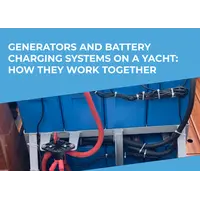What type of stand-alone generator should you buy for your specific yacht? The topRik team understands your struggle due to the huge selection of these devices, and is in a hurry to help with its recommendations. In this article we talk about practical experience in using portable and stationary generators on motor and sailing yachts. Most topRik experts have participated in transatlantic crossings, so they have practically assessed both the advantages and disadvantages of all types of autonomous alternators.
Please note that our marketplace includes a large selection of independent alternating current generators for yachts of various sizes and configurations, in particular, diesel models with power from 2 kW to 9 kW and higher at 3000 and 1500 rpm, with an air-water cooling system, water intake, control panel and soundproof housing.
Electricity consumption when sailing is usually higher than it might seem at first glance. The “peak” of consumption occurs, naturally, at night. An integral mast light with a halogen lamp takes approximately 2 A (at 12 V) - and when using a conventional incandescent lamp, even more so with separate side and masthead lights, the current consumption will be noticeably higher.
And this is only the minimum set of electricity consumers on a yacht on the simplest coastal cruise. After all, power supply is also necessary for lighting the cabins, as well as for all kinds of electronic devices: radio station, log, echo sounder, radar, chart plotter, navigation system, autopilot, 12-volt refrigerator, TV or radio, if these achievements of civilization are present on board.
On average, you should focus on a current consumption of around 3-5 A (daily consumption is about 50-100 Ah), although with intensive use of all the listed devices, this value can reach 10-12 A.
But, be that as it may, even with the most economical use of electricity, a yacht battery must be regularly recharged. If shore power is not available, you have to start the engine or motor generator (alternator) to do this. Replacing batteries with 30-50 Ah is a long, noisy and expensive task, and I would like to find some kind of alternative to this method of recharging.
Manufacturers of marine electrical equipment are sensitive to the needs of sailors and offer various types of autonomous marine alternating current generators. These can be huge, powerful monsters for equally huge heavy-duty ships or simple portable gasoline generators for small boats and boats, as well as stationary diesel units for yachts of almost any size and with any set of electricity consumers.
topRik experts do not risk giving advice to captains of heavy-duty vessels. But our experience is enough to help you make a choice of a portable or stationary model of an independent generator for a specific motor or sailing yacht.
Portable Generators
Portable models of self-contained generators are usually equipped with handles for carrying. This, in fact, ends the description of the installation of this device. That is, you can take it out, install it and run it for the duration of the operation and then put the portable generator in a locker or other designated place for permanent storage.
And here some features of operating such a generator begin. Most portable models are equipped with an air-cooling system, so they must be used outdoors or in cool, ventilated areas, which, as you know, are not available on a yacht. And to ensure their maximum mobility, manufacturers do not use protective covers, so the user will have to take care of protecting the generator from precipitation, dust and environmental influences. So, the place where your portable generator will operate will most likely be on the deck.
Such an electric generator can be moved or transported to another place at any time, or connected to any site. In general, portable devices are designed for temporary use (usually up to 12 hours) and have a low power output compared to stationary devices (2-20 kW).
A portable generator can be gasoline, diesel or gas type.
Portable gasoline generators can operate for a short time; after 4–8 hours of continuous operation, the generator must be stopped until the engine cools completely (about 1 hour). This is due to the effect of oil degradation, which loses its properties when overheated. That is, the gas generator cannot operate for more than 4–8 hours in a row.
Portable diesel generators can run for longer periods of time without stopping than gasoline ones, but they still need a break in operation to cool down.
Portable gas generators have characteristics similar to gasoline ones.
You can independently assess the safety level of each type of fuel (diesel, gasoline, gas) on the yacht during autonomous navigation. At the same time, calculate the possibilities of refueling along the route, and also take into account the problems and safety of storing fuel reserves on board.
Gasoline-powered portable generators are cheaper and less heavy than their diesel-powered counterparts.
Since gasoline alternating current generators are more in demand by sailors as an additional source of energy than portable models of diesel generators, we will dwell on them in more detail.
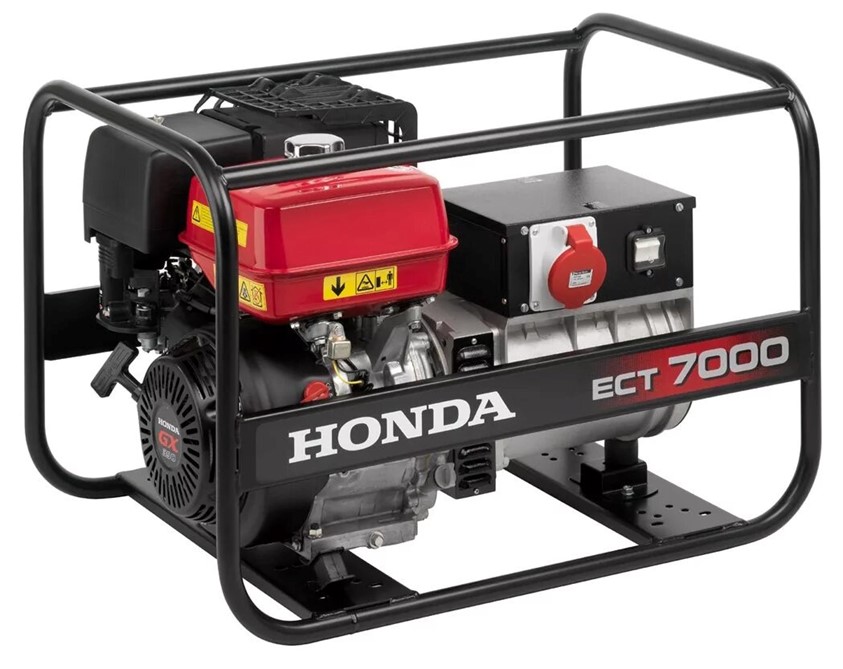
Brands and models differ in noise level in decibels and weight, and if the weight and dimensions are approximately the same, then there is a difference in noise level. A good generator like Honda or Yamaha has a noise level of about 55 dBa, cheaper analogues - about 70-90 dBa, which will be significantly noisier at anchor.
Modern gasoline generators usually come with a built-in inverter and automatic speed controller, this gives a more stable AC sine wave at the output.
Gasoline consumption is approximately 0.5-0.8 liters per hour, depending on the load and speed.
We have already said that these generators are intended for shore use. Therefore, they have no protection from moisture and are susceptible to corrosion, which can cause them to fail ahead of schedule. But with proper care and proper storage, they can work on a yacht for a long time.
In addition to the technical and price characteristics, there are some nuances in charging yacht devices from such a generator that should be taken into account before choosing one for your yacht.
As you know, boats and yachts use a 12V or 24V consumer distribution and power supply system. Although the system is considered 12-volt, the batteries are charged at a voltage of about 14.8 volts.
For example, a 30A charger that charges batteries has an efficiency of about 65%, depending on the model. Thus, at a maximum of 30A x 14.8V = 444W goes to charge the batteries.
Taking into account losses in the charger, the minimum required input power should be 444W x 100/65 = 683W.
On the other hand, a gasoline generator has an operating current of approximately 80% of the maximum current stated in the specifications. But it should be borne in mind that even if the generator’s marking indicates, for example, the number 1000, the technical data often indicates a maximum output power of 900W.
Thus, if 900W x 80% = 720W. This is very close to the maximum load of our conventional charger (683W).
Therefore, if you have a charger, for example, 40A, then a cheap 1000W generator may simply not be able to handle it and will constantly turn off due to overload.
Before connecting the load in the form of a charger, you must first start the generator and wait until it warms up a little and reaches a stable speed. After this, you can connect the load. Otherwise, the generator will trigger overload protection. To stop, everything must be done in the reverse order: first turn off the load, and then stop the generator. This simple rule will help you avoid burning the expensive charger on your yacht.
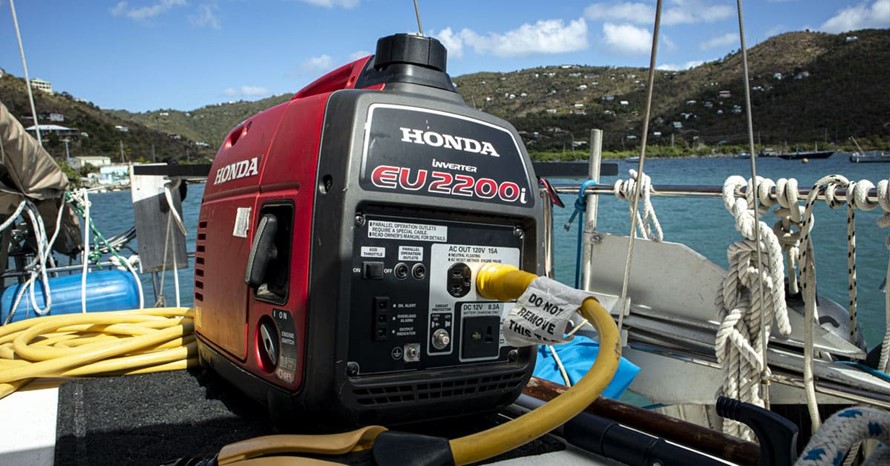
Another subtle point is the type of charger and how it perceives “non-clean” electricity. The generator produces alternating current 220V with a frequency of 50Hz, but the output current is unstable due to several factors: for example, the generator flywheel is very small and does not compensate for variable engine speeds, as a result, the output current is “impure” in frequency and voltage. Modern chargers usually operate on the “switch-mode” principle and require “clean” electricity at the input.
Therefore, it is very important to buy a generator only with a built-in inverter, which will largely compensate for this problem.
As a rule, the operating time of a generator using gasoline in a tank is about 4-5 hours. That's about how much you need to charge the yacht's batteries. And after almost every charge you need to fill up with gasoline, which is not very safe on a yacht. If charging the batteries with a generator when anchored does not cause problems, then while moving with a list, the generator may simply not work, since it is not designed for such work.
Stationary
A stationary diesel generator in a marine design, cooled by sea water, closed in an almost hermetically sealed casing, with almost perfect sound insulation - an ideal option if the yacht is overcrowded with equipment that requires a large amount of energy.
For such a diesel installation, you will have to allocate a permanent place, but in the case of this type of generator you will not have to deal with the problem of exhaust, as with gasoline models.
And it doesn’t take up that much space; it starts with the press of a button. And often – automatically, according to a timer or a signal from a battery monitoring device.
Thanks to the system of casings and gaskets, modern models operate with little noise. Fuel is obtained from a common tank with the main engine, and the consumption is minimal when compared with the consumption of gasoline to produce the same amount of energy.
Two hours a day of rumbling that is quite tolerable for the ears and nerves - and your yacht is fully supplied with electricity. The refrigerator and freezer are in full operation; while the stationary diesel generator is running, you can run a desalination machine, a washing machine and a dishwasher, and even a welding machine and a drill. The heat exchanger on the generator cooling circuit will provide you with hot water in the shower.
Thanks to a stationary alternating current generator, you solve all the problems of all electricity consumers on the yacht; you even have the opportunity not just to dream of an air conditioner, but to install a full-fledged air conditioning system on the boat.
With the installation of an autonomous diesel generator, we could forget about solar panels and wind turbines if we were not keen on saving money. Considering the energy consumption of our entire fleet, this matters. Therefore, both solar panels and wind generators are installed on some of our yachts, depending on the routes they are intended for.
If you have the means, and you also care about the ecology of the marine space, you can combine an autonomous alternating current generator with free energy sources.

Stationary generators allow you to solve more complex problems. Their power is tens of times greater than the power of mobile devices, up to several megawatts, so they can temporarily or even permanently support the operation of the entire electrical system, even on megayachts. Stationary autonomous alternating current generators are integrated into the yacht's electrical system itself, and are not connected to a separate device – they are started not manually, but using automation, often remotely, through a special application for monitoring programs for batteries.
The operating mode of an independent generator depends on how the ship's electrical system is organized. The power supply can be switched to the generator as soon as a signal is received that the batteries that power the yacht's electrical system are low. As soon as a signal is received about the normal “loading” of the batteries, the power of electrical equipment is switched to them, and the generator can turn off if it is not involved in other processes (we have already said that there are powerful alternating current generators that can work “without rest”).
This integration of the DC generator allows the captain to monitor the operation of all electrical equipment through the battery monitoring system. Such a system can be autonomous, with its own control panel, or can be integrated into the overall control system through a multifunctional chartplotter, on the screen of which you can display battery status and other parameters of the yacht’s electrical system.
Which One to Choose Based on Your Needs?
When choosing between a portable and stationary alternating current generator for a yacht, you must be guided by both the operating conditions of the device, its functions and characteristics, the features of the yacht’s electrical system, as well as the power of the equipment connected to the power sources.
Stationary models are much more reliable, durable and powerful, but it is not practical to use them for short-term or periodic tasks. While even the most powerful and high-quality portable generator will not be able to provide periodic operation of powerful equipment, not to mention regular power supply to the facility.
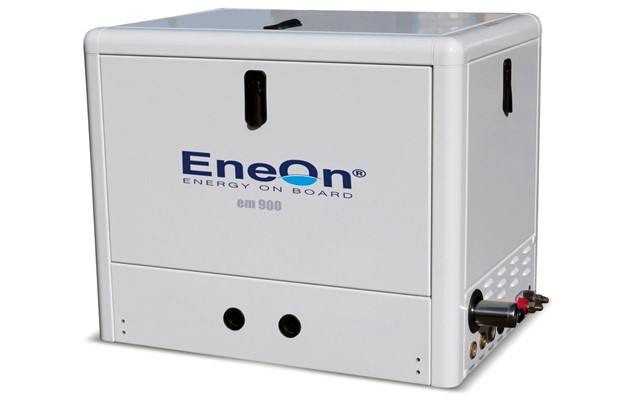
Therefore, before you start choosing the appropriate model of an autonomous alternator for your yacht, conduct a complete audit of its electrical system - both the existing one and taking into account the changes you have planned.
Your list should include all power sources on the yacht, as well as all possible consumers. Describe in detail the power of all the equipment mentioned and calculate the daily energy consumption literally by the hour - this way you will take into account turning on the yacht's lights, making a cup of coffee and turning on the air conditioner during a particularly hot period of the day or night. Also try to take into account the specifics of the route and, if there are solar panels, the weather conditions in the sailing region.
And only after you have combined all the data from numerous long tables into a single formula for your daily electricity needs, can you consciously make a choice in favor of the type of alternator that you really need.
When to Choose a Portable Generator
In order to maximize the life of batteries and ensure their rapid recovery, during operation we must strive to ensure that they do not discharge below 50% of their full charge.
On a small boat with a minimum number of electrical appliances on board, you can use the yacht’s engine generator (alternator) to recharge the batteries if you risk not reaching a shore power source.
But it is difficult to imagine that this method would be used to recharge batteries if the daily electricity consumption is about 100 Ah.
In this case, a portable alternator may come in handy. You can switch the most energy-intensive device to it to reduce the consumption of energy stored in batteries. Yes, portable generators are connected separately to each electrical equipment, appliance or device rather than being integrated into the boat's power supply system.
One can only hope that in such a situation the yacht has a sufficiently powerful gasoline or diesel portable generator, and its captain, when equipping the vessel, took into account all the nuances of the boat’s electrical system and possible risks. The described case with an unexpected discharge of the battery is one of the possible risks.
If the boat is intended for fans of the wind in their hair, for whom the lack of a hairdryer will not ruin the day, or if it is a team of amateur fishermen who spend almost the whole day on deck and sleep well even without air conditioning, or if... Well, enough - by now you should understand in what cases it is enough to have a portable generator.
When to Choose a Stationary Generator
If the yacht is designed for comfortable cruising, you cannot do without a reliable, powerful AC power source. Otherwise, you will leave passengers without the expected amenities - hot water, soft drinks, ice cream, air conditioning in cabins, etc.
Moreover, if on this yacht the crew goes on a long transatlantic passage, where they will need not just equipment to ensure comfort, but devices to preserve health and life, for example, a seawater desalinator.
The larger the vessel and the more electrical equipment it has, the more carefully the power supply needs must be calculated, taking into account the route and region of navigation. Based on these calculations, the appropriate power of a stationary alternating current generator should be selected.
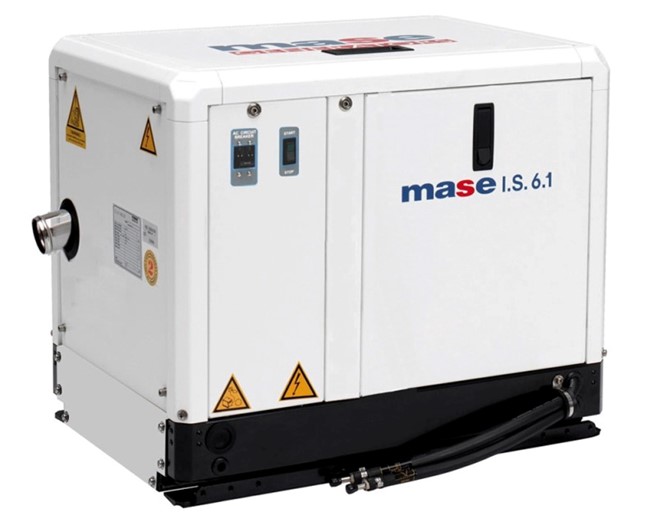
Combined Use of Both Types
We wanted to add these recommendations to the previous section, but when judged, we realized that the topic deserves a separate subtitle. As it turns out, none of the experts who have their own yachts (including charter ones) can get by with just one power source. Most owners of small yachts use an alternator, solar panels and a powerful portable diesel alternator for this purpose. Some yachtsmen in this category also have a wind generator, and one has a marine fuel battery.
Those who are keen on long-distance crossings have on board almost a complete set of modern power devices, including alternating current generators (stationary and portable, and diesel ones), as well as alternative equipment: mainly solar panels of sufficient power. This allows you to optimally economically receive energy from different sources and spend it productively.
FAQ
Which generator to choose for a small yacht – portable or stationary?
Even a small yacht can be so saturated with electrical equipment that the power of a portable generator alone will not be enough to power it. Therefore, you should focus not on the size of the yacht, but on the total daily power that the equipment of this boat absorbs. If a portable generator of a certain power is sufficient to meet these needs (taking into account other power sources, including for charging batteries), you can limit yourself to this choice.
Is it possible to use a portable generator as the main source of energy on a yacht?
No, of course, since a marine portable generator produces alternating current, and charging batteries requires direct current. The source of direct current on a yacht is the engine and/or engine generator (alternator).
At the same time, all electrical equipment on the boat runs on alternating current, that is, both alternating and direct current sources must be present on board.
How much power should a generator have to meet the needs of an average yacht?
There’s no simple answer to that, as has already been discussed below. It's one thing if this average yacht has only the most necessary electrical appliances and equipment, including navigation. What if the owner wants to have a refrigerator, freezer, electric winch or even air conditioning? Can't this fit on a mid-size yacht? Take paper, a pencil (or any device where you can place and fill out a table) - and audit everything that is powered into the yacht’s electrical system. The resulting sum of the required daily power for the full operation of all electrical equipment on the yacht will be the answer to this question.
How difficult is it to install a stationary generator on a yacht?
Indeed, we somehow missed in the general article that installing a stationary generator on a yacht requires special training. It is advisable that this be done by representatives of the manufacturer or service centers authorized by them. Then you will have the opportunity to demand that problems be corrected if they occur before the end of the warranty period.
Which generator is more quiet in operation - portable or stationary?
For some reason, it is believed that a portable generator is quieter than a stationary one, despite the fact that portable models do not have any protective casing due to the exhaust. But our experience shows that the latest models of stationary generators equipped with a double vibration damping system and a soundproof housing, such as Mase Generators, presented at our marketplace, are even quieter than portable generators of the same power.



